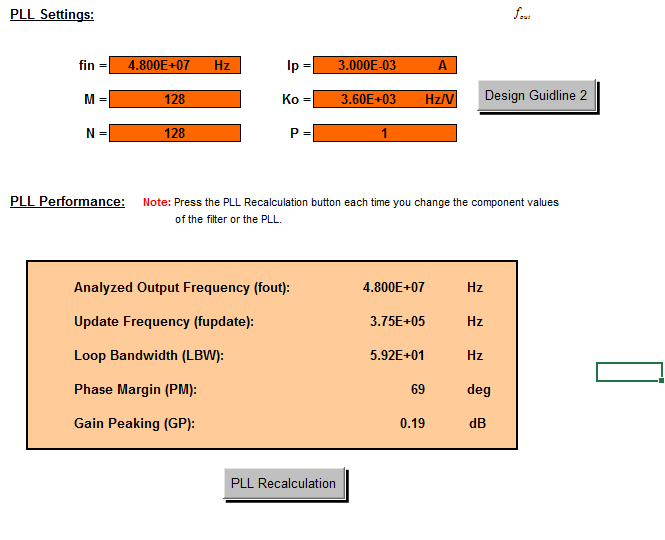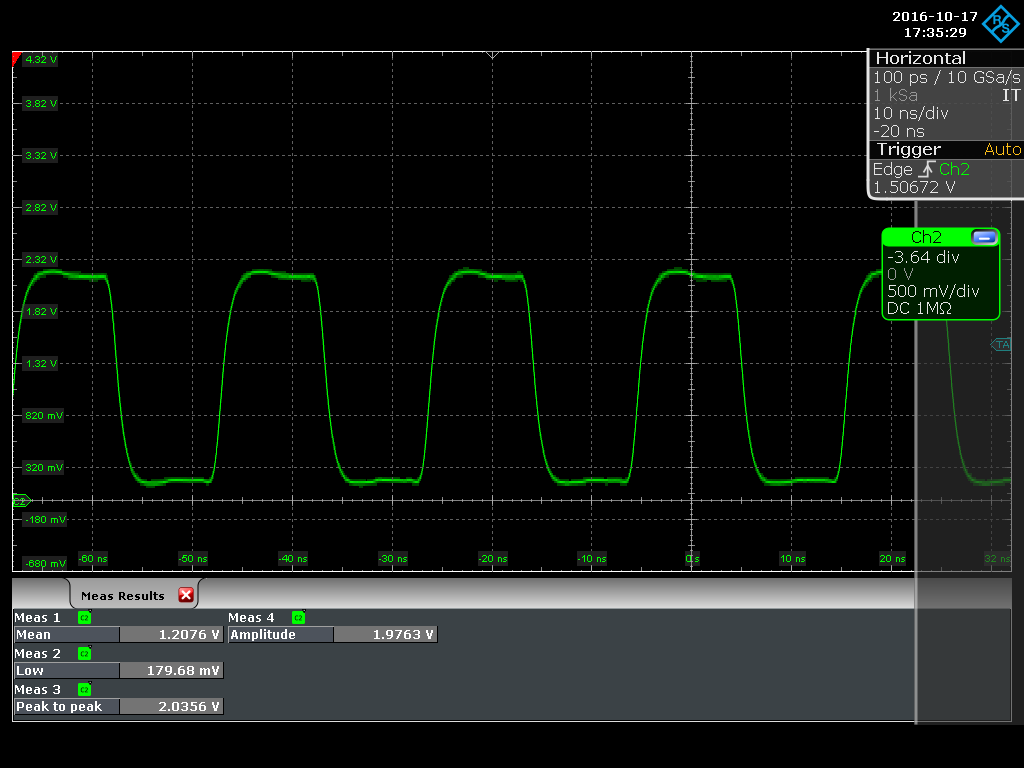Hello,
While using a custome prototype board. I am unable to have a lock on the clock while having a reference 48Mhz clock and a 48Mhz output unless I am using Cycle Slip Lock Window. However it doesn't seem to be locking as I am not able to see the lock between the input clock and the CDC output clock.
I am using the passive loop capacitors and resistor values that are given as example in the datasheet.
The values that I used in the PLL are the ones shown bellow:
LBW seems a bit low but my guess is that shouldn't be a problem.
I am using the a 48Mhz VCXO with:
Control Voltage Tuning Slope - 40 ~ 75 ppm/V
BW - 10 kHz
The settings that I am using for the CDCM7005 configuration are the following:
word 0: 0x4007F1FC
word 1: 0x28000001
word 2: 0x500000F2
word 3: 0x0000024B
Using the test configuration to see the internal clocks I don't see the VCXO clock (in blue bellow)
Ch3 (orange): STATUS REF
Ch4 (blue): VCXO STATUS
I seem to have the right values for a LVCMOS VCXO. The conditioning circuit is bellow as well as the measured VCXO input in the CDC
The input VCXO input on the CDC is the following:
The outputs are toggling at the correct frequency although there is no lock.
Thank you





